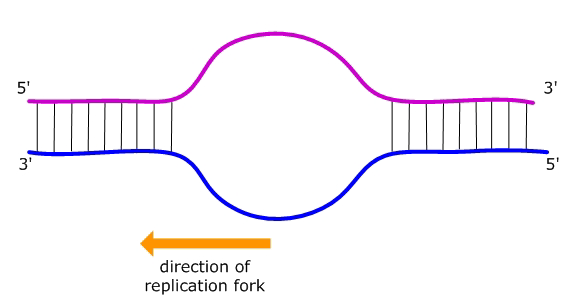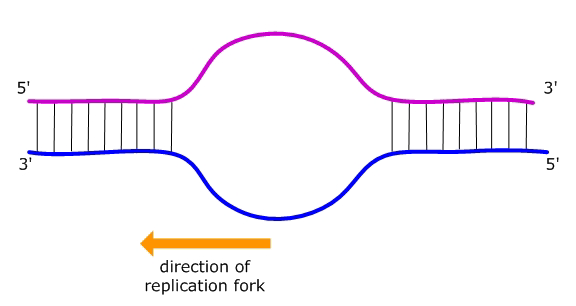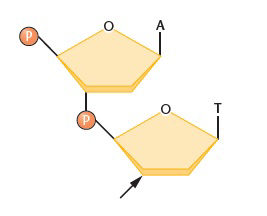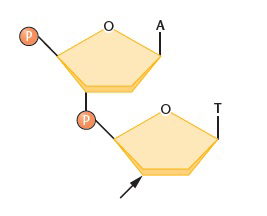DNA Replication and Recombination Quiz
1/44
Earn XP
Description and Tags
Help study for Lecture Exam 3
Name | Mastery | Learn | Test | Matching | Spaced |
|---|
No study sessions yet.
45 Terms
The amount of DNA that is replicated from a single origin of replication is referred to as a(n) ________.
replicon
DNA replication occurs by adding ________.
dNTPs to the 3' end of the daughter strand
Which terms accurately reflect the nature of replication of the chromosome in E. coli?
bidirectional and fixed point of initiation
DNA Pol III is believed to be responsible for removing the primer.
False
DNA Pol I, II, and III all possess 3' to 5' exonuclease activity.
True
DNA polymerases can all perform 5' to 3' polymerization.
True
DNA Pol I, II, and III all possess 5' to 3' exonuclease activity.
False
DNA polymerases are important in various aspects of DNA repair.
True
DNA polymerases can all initiate DNA synthesis on a template on their own.
False
Which activity of E. coli DNA polymerase I is responsible for proofreading the newly synthesized DNA?
3' to 5'; exonuclease
The protein responsible for the initial step in unwinding the DNA helix during replication of the bacterial chromosome is coded for by the ________ gene.
dnaA
During DNA replication, ________ are 1000-2000 nucleotide long strands synthesized on the ________ strand to maintain the ________ of replication.
Okazaki fragments; lagging; bidirectionality
Which enzyme is responsible for relieving the tension ahead of the fork that results when the DNA unwinds to form the replication "bubble" or "eye"?
DNA gyrase
Which of the following statements about DNA replication is true?
DNA synthesis is continuous on the leading strand and discontinuous on the lagging strand.
As unwinding of the helix occurs during DNA replication, tension referred to as ________ is created ahead of the replication fork. This tension is relieved by the action of ________.
supercoiling; DNA gyrase
DNA replication in eukaryotes ________.
initiates at multiple origins
Chromatin is defined as ________.
DNA complexed with protein
Continuous on one strand and discontinuous on the other strand.
Prokaryotic and Eukaryotic
The only replication origin in a chromosome
Prokaryotic Replication
Euchromatin and heterochromatin replicate at different times
Eukaryotic Replication
Long Okazaki fragments (about 1000 nucleotides)
Eukaryotic Replication
Multiple replication origins
Eukaryotic Replication
Bidirectional
Prokaryotic replication
Short Okazaki fragments (about 100 nucleotides)
Prokaryotic replication
The process of making DNA from an RNA template is referred to as ________.
reverse transcription
Which term describes a genetic exchange between two DNA molecules with substantial DNA sequence homology?
homologous recombination
The new DNA in the daughter strand is interspersed among the old pieces
dispersive
The old DNA is completely conserved
conservative
Each daughter strand is composed of one old DNA strand and one new DNA strand
semiconservative
Separation of the individual covalent, phosphodiester bonds is required for this mode of replication
dispersive
The original DNA strand is broken into pieces
dispersive
The original double helix remains as a complete unit
conservative
The new DNA double helix is produced as a single unit
Conservative
Kornberg showed that nucleotides are added to the 3'-end of each growing DNA strand.
In what way does an exposed 3'-OH group participate in strand elongation?
It directly participates in the formation of a covalent bond with the nucleotide being added

Can you distinguish between (a) unidirectional and bidirectional synthesis, and (b) continuous and discontinuous synthesis of DNA?
This diagram depicts an origin of replication, with the direction of the movement of the replication fork indicated.
unidirectional

Given the direction of replication and the orientation of the two DNA strands, which of the following is true?
Select the two true statements.
-The bottom strand (blue) is the lagging strand; it is being synthesized discontinuously
-The top strand (pink) is the leading strand; it is being synthesized continuously
Primase
Not involved in the unwinding of DNA for replication
DNA gyrase (topoisomerase)
Release supercoiling by nicking DNA
DNA polymerase
Not involved in the unwinding of DNA for replication
Helicase
Opens DNA Double Helix
DnaA replication initiation factor protein
Not involved in the unwinding of DNA for replication
Single-stranded binding protein
Stabilizes the open conformation
DNA ligase
Not involved in the unwinding of DNA for replication

Consider the drawing of a dinucleotide below. Is it DNA or RNA ?
DNA

Consider the drawing of a dinucleotide below. Is the arrow closest to the 5' or the 3' end?
3’